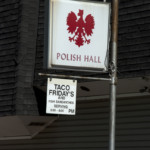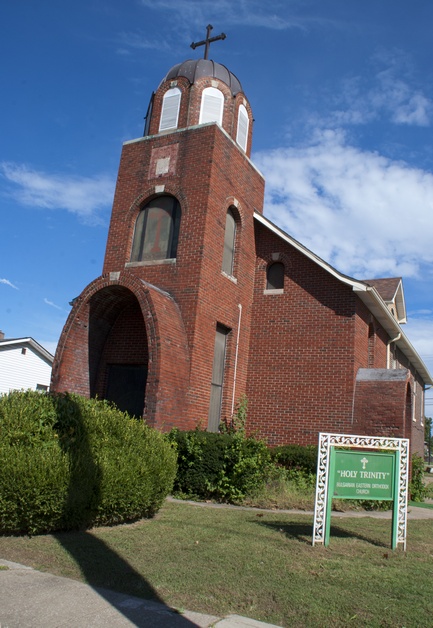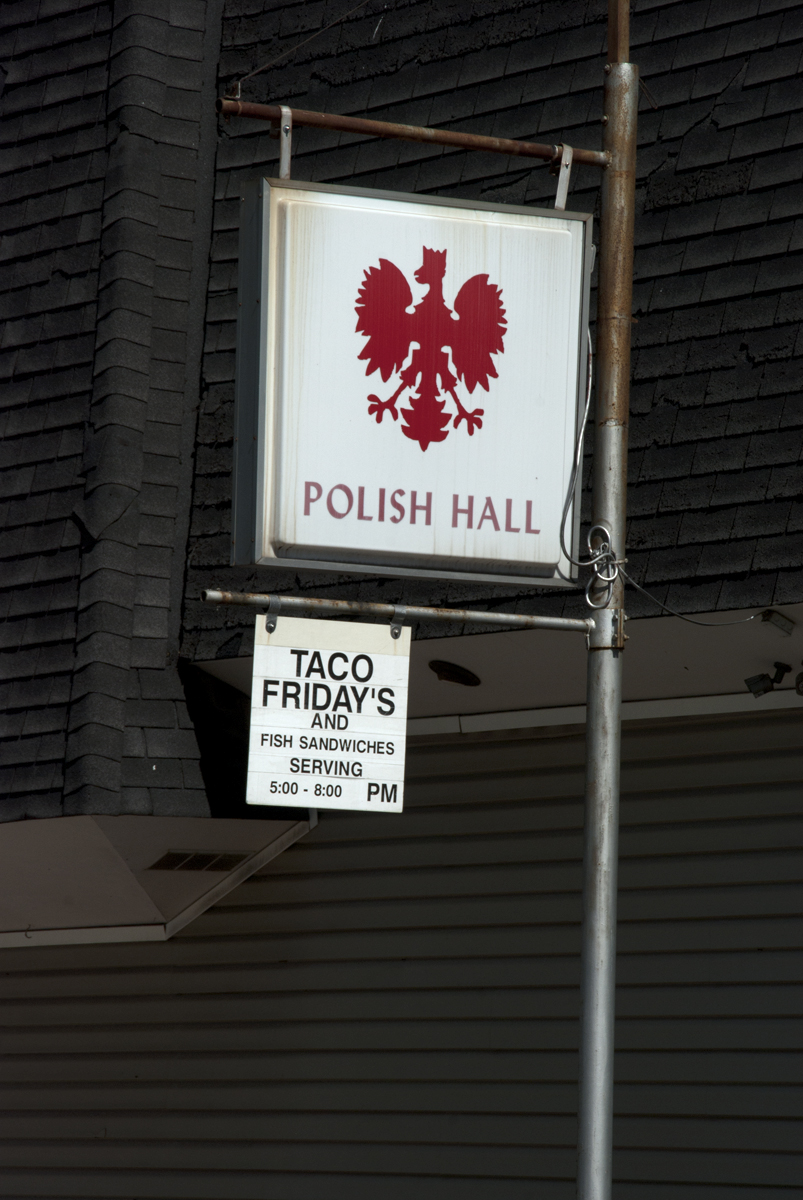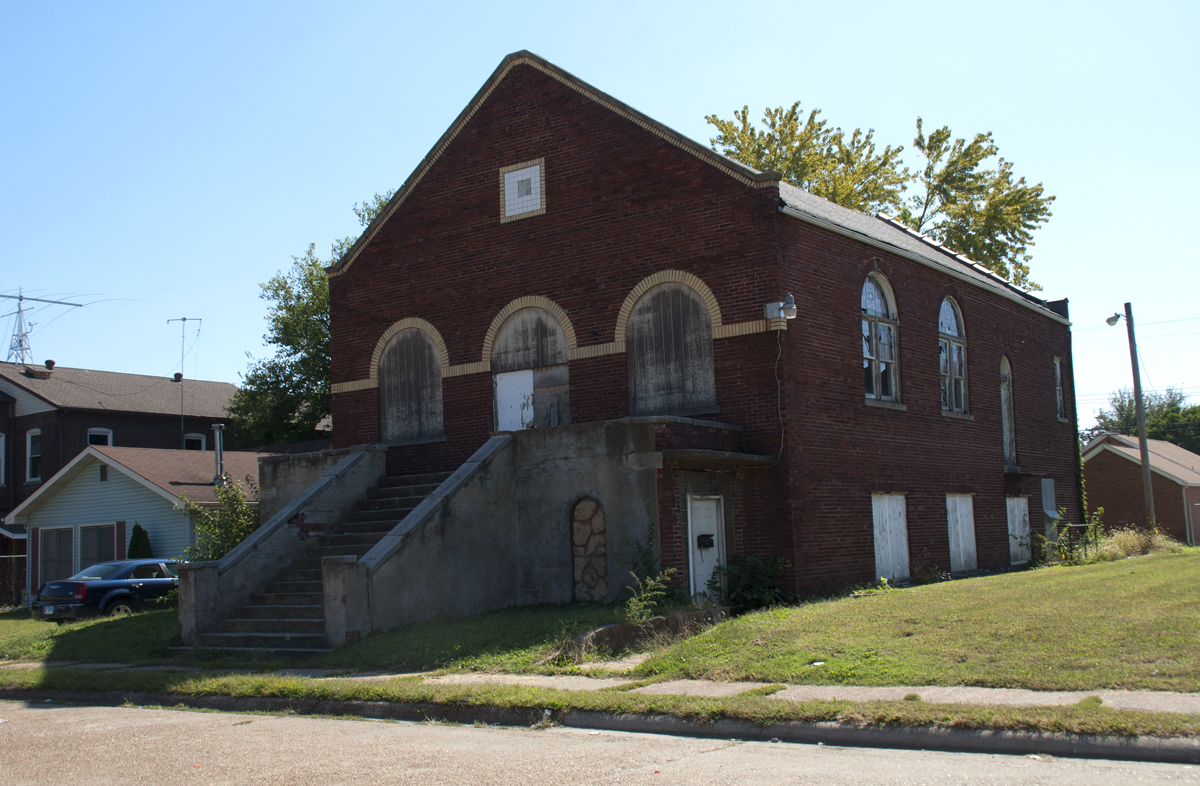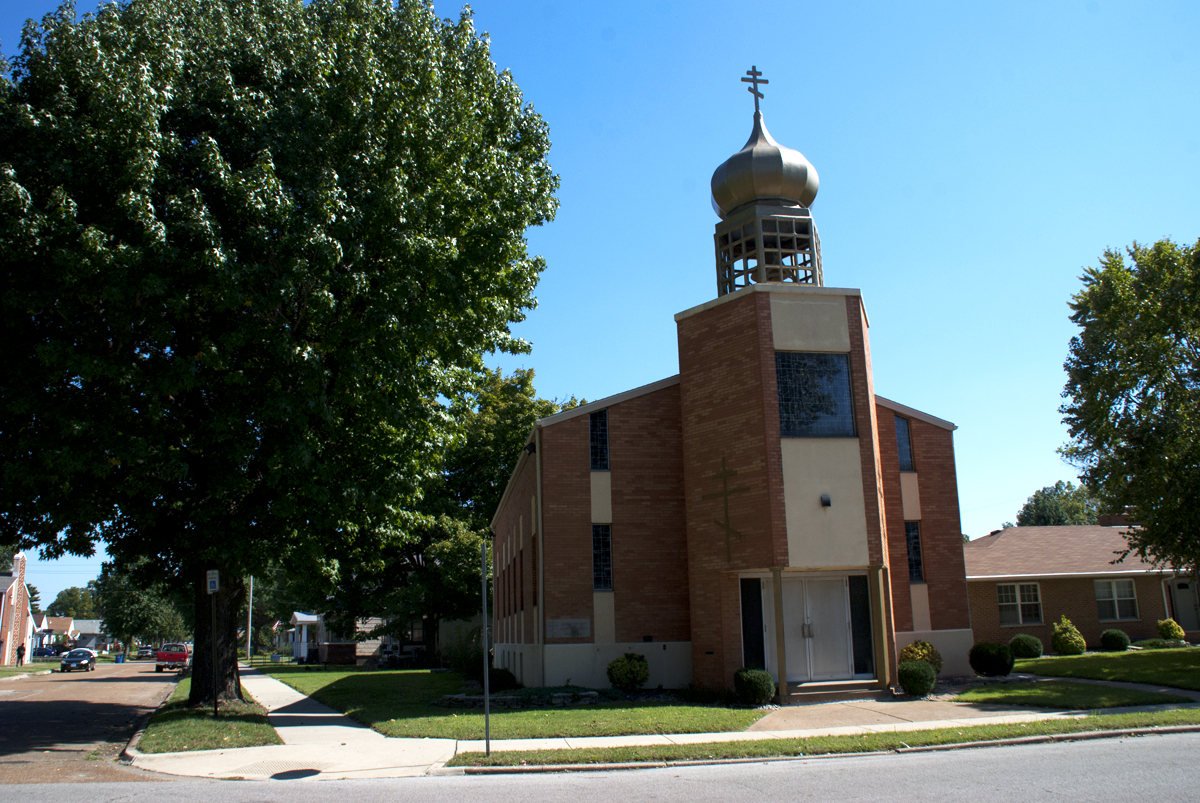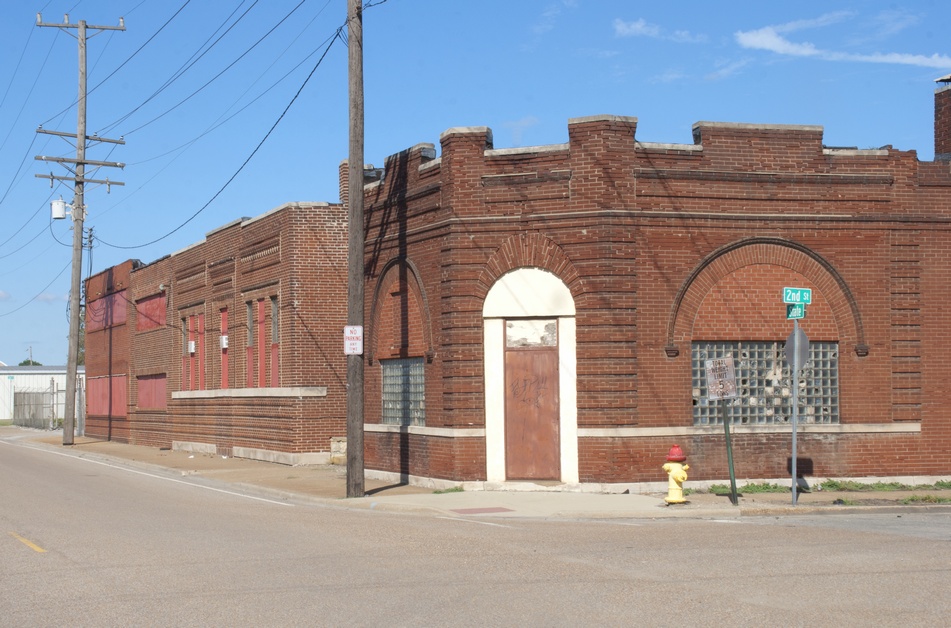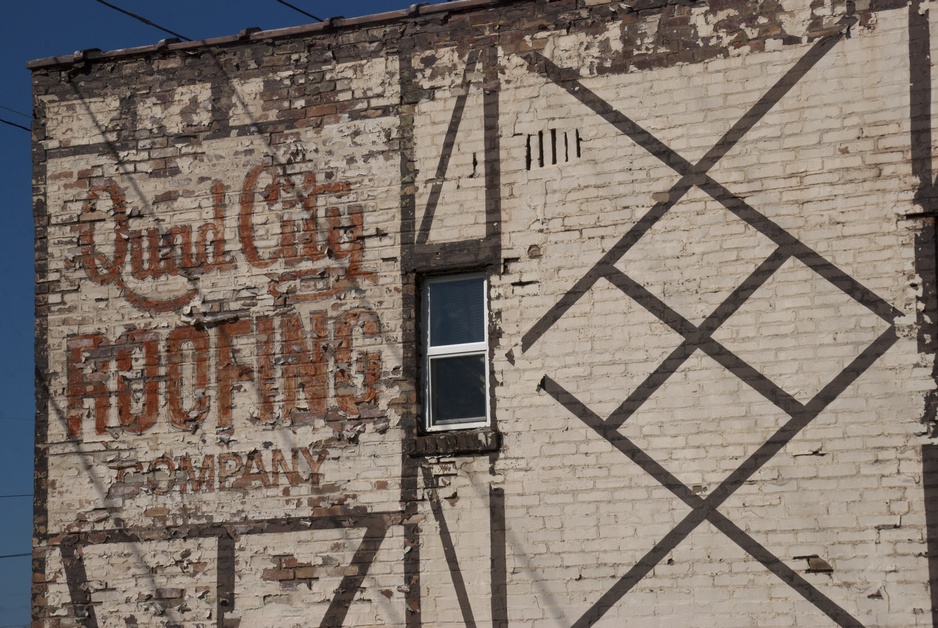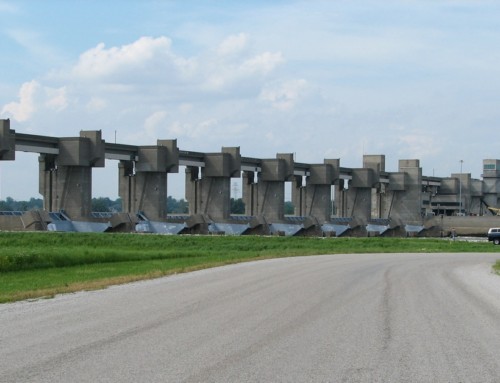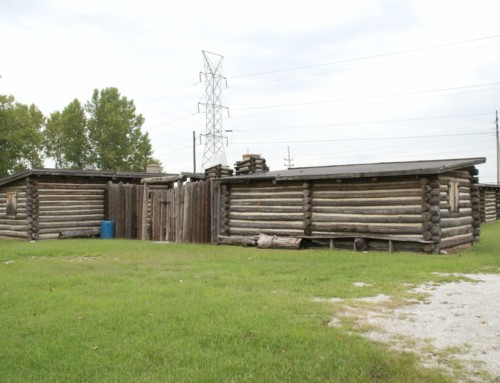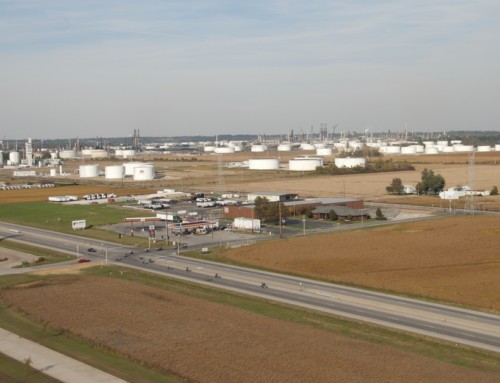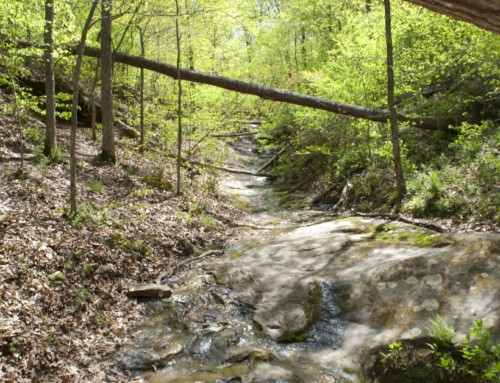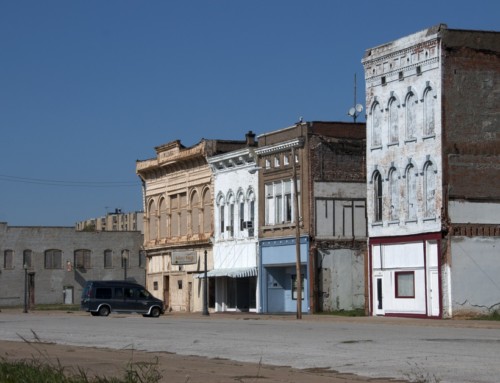Introduction
Part of Tri-Cities with Granite City and Venice, Madison was home to an amazing mix of ethnic neighborhoods for a city of its size. Add in the machine politics that ruled the city for decades, and Madison looks a lot like Chicago in miniature, at least until the factories began to shed jobs and people moved away. Still, the city maintains pieces of its rich ethnic past.
History
Through most of the 19th century, the land around today’s Madison was farm country. In the 1850s, TW Blackman laid out a village he called Newport, but it didn’t attract much interest. Everything changed near the end of the century as St. Louis business interests looked for ways around the Jay Gould-owned Eads Bridge monopoly and its high prices.
A group of St. Louis businessmen called the Merchants Exchange figured that the best solution to avoiding Gould was to build a new bridge. The Merchants Bridge, a railroad-only bridge, opened in 1890 three miles north of the Eads Bridge. The bridge created new economic opportunities in Illinois, so the Merchants Exchange formed the Madison Land Syndicate, then bought the farm of farm of William and Nancy Sippy for nearly $120,000.
Madison officially came into existence on October 12, 1891, when it was incorporated as a village on the land where the Sippy farm had been. That same year, Madison Car and Foundry Company opened a new factory (known to folks as the “car shops”) and more businesses soon followed: the Standard Oil barrel works, a round house for Terminal Railroad, Helmbacher Forge and Rolling Mill, Laclede Steel, Kettle River Tie and Lumber Company, and Tri-City Refrigeration.
All of those companies needed workers, and it needed them quickly; some 2,500 jobs were created nearly overnight. Men from the Missouri Ozarks were among the first to get hired, but the plants also attracted African Americans from the South. Most of the factory workers, though, were immigrants from eastern Europe. Poles were the most numerous, but Bulgarians, Macedonians, Romanians, Croatians, Russians, Lithuanians, Czechs, Yugoslavians, Hungarians, and Greeks also moved to Madison.
While the earliest workers commuted to Madison by train, the companies built some housing for workers in the new city. Not everyone was impressed with what they built. One person observed that the city was “two rows of flimsy, box-like houses erected near the foundry.”
Because the factories needed to hire thousands of workers quickly, Madison initially attracted mostly unmarried men, or men whose families hadn’t yet relocated with them. Many of those men lived in boarding houses where they had to share a room—and often a bed—with a man who worked a different shift. Janko got the bed from, say noon to midnight, while it was Feodor’s from midnight to noon.
The men didn’t work 24/7, so they needed some way to pass the time when they weren’t working. This created demand for activities that appealed to single men, like gambling, drinking, and having sex, so billiard halls, bars, and brothels sprang up along Grand and State Streets near the factories and boarding houses. In 1900, Madison had 68 taverns for its 2,000 residents and the hundreds of workers who lived elsewhere. Early Madison therefore had the feel of a frontier town and gained a reputation as a community where one could go to indulge in those activities. It kept that reputation for a long time.
The taverns were the focus of social life for almost everyone, not just the factory workers, but they could also be good places to get in trouble, for anyone. In 1905, police chief Patrick McCambridge got in a fight with his friend, Samuel Houston. The two were drinking at a local bar and got into an argument over the location of an upcoming carnival (which would determine who would profit from it). They couldn’t find a way to dial back their feelings, so as tensions escalated, McCambridge—the chief of police—shot and killed Houston—the village’s treasurer.
While the city’s political leaders generally stayed away from gunfights as a way to resolve differences of opinion, they built a machine that dominated governance for generations. Patrick Coyle (“King Coyle”), served as Village President and then mayor for ten years (with plenty of evidence of corruption). In the 1905 election, he was initially declared the winner, but the results were contested by his opponent, Ferdinand Garesche. A judge found enough doubt about the integrity of the election to order a new round of voting, though. The night before the election, Mayor Coyle skipped town and never came back. He apparently believed that he had reached the end of the line as mayor; he died in East St. Louis later that year. Garesche would stay in office for the next thirty years.
A major flood in 1903 disrupted the early workings of the community. Railroad embankments served as levees, so when they were topped, five feet of water covered city streets, destroying many homes in the process. Some people had to be rescued from the high waters, and relief organizations built refugee camps, some of which were marked with flags representing their home countries.
Madison recovered and rebuilt, and workers settled into ethnic neighborhoods. Bulgarians and Macedonians generally lived in the center of town from State Street to Iowa Street. Romanians and Croatians lived along Grand Avenue. Poles, Russians, and Lithuanians lived in east Madison, clustered around Edwardsville Road and Greenwood Avenue. Czechs, Hungarians, and Yugoslavians lived primarily in north Madison, joined later by Mexican immigrants. African-Americans lived in West Madison and Newport (the only places they were allowed to live). A few Jewish families moved to Madison before World War I. Herman Schermer opened a grocery store that served residents for decades. Joseph Glik opened a clothing shop at 3rd and Madison; while that store is no longer open, the company is still going strong. If you walked around town in the early 1900s, you would hear dozens of different languages spoken.
Even as folks settled into new neighborhoods and the number of single men declined, Madison still had a hard time letting go of its stake in the vice trade. In 1912, the Granite City Press-Record called Madison the “most wide-open and wickedest city in the State of Illinois,” a reputation that stuck well into the 1950s. Token campaigns to close gambling houses and bars never got much traction. The momentum began to turn in 1950, though, In that year, Illinois Governor Adlai Stevenson ordered raids on gambling houses around the state, including Madison. Paul Simon, the future bow-tied US Senator called for a crackdown on crime in corruption in Madison when he was the 22-year-old editor of the Troy Tribune.
Those efforts were definitely more popular outside of Madison than within it, though. In 1953, Henry Cohan ran as a reformer on a platform to shut down gambling and other vice businesses; he lost in a blowout. The outside pressure did have an effect, though. Bars and gambling businesses gradually closed in the 1950s, maybe due to some combination of the legal pressure and a drop in demand as factories cut jobs and workers relocated to other cities. Madison’s population, after all, fell 14% from 1950 to 1960.
Madison remained in good financial shape during the 1950s, though, thanks to tolls from the Chain of Rocks Bridge. The city bought the bridge in 1939 for $2.5 million and made good money from the tolls, which netted the city $100,000 a year during the 1950s. In 1951, the mayor gave everyone a pass on property taxes because of those tolls.
The vice trade came back in the limelight in the 1970s when three Madison police officers were charged with taking bribes to allow illegal activities like prostitution, gambling, and letting bars staying open after hours. The sheriff and mayor were also implicated, but the mayor was never charged. The sheriff and three officers were convicted but the sheriff died before serving any time.
In the second half of the 20th century, Madison wasn’t immune to the social forces that were reshaping the rest of the country. Some factories closed, while others cut back their work force. Cars and new roads attracted people out of older cities and into shiny new subdivisions. For Madison, that generally meant that professionals and better-off residents moved away, leaving behind a city that was poorer and less populated.
The legal and social structures that supported racial segregation also began to crumble. Madison, for example, built a community pool in the 1950s but opted to close it less than a decade later rather than allow African American residents to use it, too. Access to a swimming pool was among the least serious problems for black residents, though. Madison ran a segregated school system, and schools for African American children were demonstrably worse off than schools for white children. The inequalities led to a school strike in November 1967. Even though the high school had been integrated by then, African American students believed they were given access to fewer opportunities and few African American adults had jobs at the school.
Meanwhile, the city’s Democratic machine kept tight control of local politics. Stephan Maeras was elected mayor in 1942 and was still mayor when he died in 1970. A lot of backroom deals were cut at Besserman’s Tavern. To their credit, though, the machine ran smoothly and provided good city services.
Madison’s fortunes began to turn in the 1960s, though. The city stopped charging tolls on the Chain of Rocks Bridge in August 1966, and it closed in 1970, not long after the new Chain of Rocks Bridge opened. The loss of factory jobs and population accelerated. The city lost a quarter of its population in the 1970s and has continued to lose residents since.
One strategy the city has used to stay viable is to annex land to the east hoping for industrial and commercial development. The Gateway Motorsports Park at Interstate 70/55 and State Highway 203 is one success they can point to, although the wisdom of the general strategy is debatable.
Madison today is a city struggling to hang on, but there are still vestiges of its old community life and ethnic neighborhoods.
Exploring the Area
Once part of famed Route 66, the Old Chain of Rocks Bridge has been repurposed for pedestrians and bicyclists, connecting the Mississippi River Greenway in St. Louis with the Madison County Confluence Trail in Illinois. Opened in 1929, the bridge is about a mile long and has a trademark 22-degree bend about halfway across, a turn that reportedly scared the heck out of people driving across. The views from the bridge are outstanding. From Route 3, go west on Chain of Rocks Road and follow the road until it ends. You may have a bit of a wait at the stoplight that controls the flow of traffic across the one-lane bridge over the navigation canal.
When you look south from the bridge, you will notice two curious structures that look like small castle turrets. They are water intake towers built in 1894, an era when people believed that something as mundane as water intake towers should be beautiful. Just south of the towers you will see a rare stretch of Mississippi River rapids, the Chain of Rocks. The rapids are not exactly navigation friendly, so the ten-mile Chain of Rocks Canal was built to bypass them; it opened in 1953.
- RANDOM FACT: The Old Chain of Rocks Bridge is one of several local sites that stood in for post-apocalyptic New York City in the movie Escape from New York.
Madison may be a couple of generations removed from its immigrant ancestors, there are still a few places around town where old ethnic traditions continue:
- St. Stanislaus Lodge, aka Polish Hall (826 Greenwood St.)
- Holy Trinity Bulgarian Eastern Orthodox Church (1300 Grand)
- Nativity of the Virgin Mary-Russian Orthodox Church (416 Ewing Ave.)
- Our Lady of Czestechowa-St. Mary’s Roman Catholic Church (1621 10th Street)
Entertainment and Events
World Wide Technology Raceway in Madison (700 Raceway Blvd., 618.215.8888) hosts major auto racing events.
**Madison is covered in Road Tripping Along the Great River Road, Vol. 1. Click the link above for more.Disclosure: This website may be compensated for linking to other sites or for sales of products we link to.
Where to Eat and Drink
Grab a drink at St. Stanislaus Lodge, aka Polish Hall (826 Greenwood St.) or stop in Friday night for tacos (5-8).
Marko’s Fish Restaurant (820 Madison Ave.; 618-876-9212; T-Th 11-6, F 10-7) has been serving fish plates to Madisonians since 1928, using the same recipe the whole time. When you get a fish sandwich at Marko’s, you are biting into the past. Cash only.
Resources
- Madison Public Library: 1700 5th St.; 618.876.8448.
- Post Office: 549 Madison Ave.
Where to Go Next
Heading upriver? Check out Granite City.
Heading downriver? Check out Venice.
Community-supported writing
If you like the content at the Mississippi Valley Traveler, please consider showing your support by making a one-time contribution or by subscribing through Patreon. Book sales don’t fully cover my costs, and I don’t have deep corporate pockets bankrolling my work. I’m a freelance writer bringing you stories about life along the Mississippi River. I need your help to keep this going. Every dollar you contribute makes it possible for me to continue sharing stories about America’s Greatest River!
Madison Photographs
©Dean Klinkenberg, 2018
